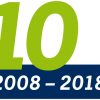How to effectively sell energy efficiency projects – part I: the bad and right metrics

The holy grail for most sales people in our industry is to increase their success in closing deals and decrease the usual long sales cycle. Most sales people will expose the benefits of the energy efficiency projects by calculating the potential energy savings and the time it will take to payback the initial CAPEX (Capital Expenditure) required. This energy efficiency payback period argument has been standard practice in the industry for the last decade with somewhat disappointing results…
Yet, we continue to push the same story to our customers.
Sales is no longer about pushing product features and an energy payback period, it’s about understanding the core customer pain points and presenting a compelling story with a minimum analysis of their situation with potential solutions for their business. And the analysis must include a number of ROI factors, use the right financial metrics and be presented to the right jury of decision makers.
The bad metric
Return on Investment simple payback period…this is the common metric we provide as an industry to try and convince stakeholders to invest money into an energy efficiency project.
This is the wrong metric.
Why have we used it for so long? My opinion: we are being lazy. Simple payback period is very easy to calculate and is understood by almost everyone.
Why is it flawed? It does not factor in cost of capital, rising energy costs and other factors but more importantly it is not a metric used by any CFO or CEO when taking a go/no go decision on any of their other business investments. Talk about apples and oranges!
As sales professionals, we need to use the right metrics:
- Net Present Value (NPV)
- Internal Rate of Return (IRR)
The right financial metrics – Net Present Value
NPV will essentially provide you an indication if your project is providing positive or negative value to your business today. Determining the value of a specific project is challenging since there are different ways to measure the value of future cash flows. Because of the time value of money, a dollar earned in the future won’t be worth as much as one earned today. The discount rate in the NPV formula is a way to account for this. CFOs have different ways of identifying the discount rate, although a common method is using the expected return of other investment choices with a similar level of risk.
The following is the formula for calculating NPV:
where:
Ct = net cash inflow during the period
Co = initial investment
r = discount rate
t = number of time periods (years)
Source:
http://www.investopedia.com/terms/n/npv.asp#ixzz3XOk5LVeO
http://en.wikipedia.org/wiki/Net_present_value
The right financial metrics – Internal Rate of Return
The discount rate often used in capital budgeting that makes the net present value (NPV) of all cash flows from a particular project equal to zero. Normally, the higher a project’s internal rate of return, the more desirable it is to provide a go decision to the project. As such, IRR can be used to rank several potential projects a firm is considering. Assuming all other factors are equal among the various projects, the project with the highest IRR would probably be considered the best and undertaken first. This is how most CFOs take go/no go decisions.
Another way to explain IRR is the rate of growth a project is expected to generate. While the actual rate of return that a given project ends up generating will often differ from its estimated IRR rate, a project with a substantially higher IRR value than other available options would still provide a much better chance of strong growth.
IRRs can also be compared against prevailing rates of return in the securities market. If a firm can’t find any projects with IRRs greater than the returns that can be generated in the financial markets, it may simply choose to invest its retained earnings into the market.
Source:
http://www.investopedia.com/terms/i/irr.asp#ixzz3XOjOyr5I
http://en.wikipedia.org/wiki/Internal_rate_of_return
The right metrics will land you deals
I’ve seen too many energy efficiency projects being refused because they were promoted with a 4 year payback period. Most stakeholders would dismiss the project as low value for their investment and taking too long to payback. Yet, that same project offered a positive NPV and an IRR of 20% and these metrics could have been calculated in a few minutes with any spreadsheet software. Both these metrics met and surpassed the usual bar for a go decision. Keep in mind that most companies will invest based on a positive NPV and a minimum IRR target, not payback period. A project with 15% IRR or higher is quite impressive (assuming 5% cost of capital) versus the volatile capital market or anemic bond market. And for many businesses, 15% IRR is equal or higher return than their core business generates.
Of course, a project should never be evaluated purely on energy savings. Operational savings, increased comfort resulting in greater staff efficiency and customer satisfaction, reduced maintenance costs, increased life expectancy of equipment can be much more powerful and measurable metrics. I will cover these factors in my next blog.




Great Article